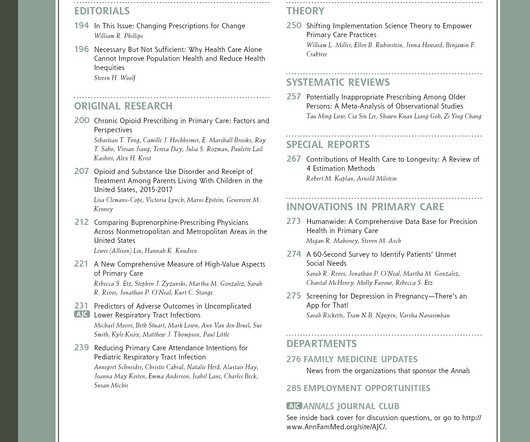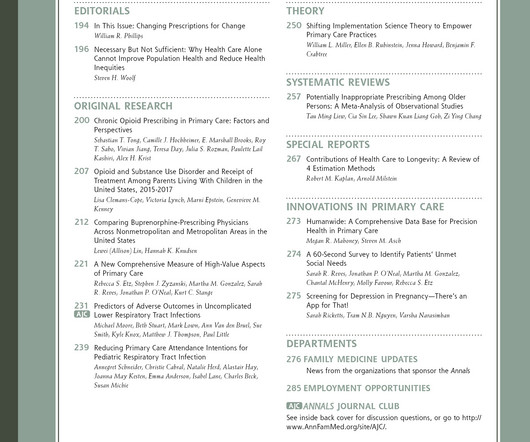Risks and Needs: Lessons Learned from Assessing Patients Willingness to Receive Help for Social Risks in Primary Care [Social determinants and vulnerable populations]
Annals of Family Medicine
NOVEMBER 20, 2024
Population Studied: 13 urban and rural primary care practices located across Mayo Clinic sites in Minnesota, Wisconsin, and Florida. The final question asked patients, who have at least one risk factor, if they would like assistance with their need(s).













Let's personalize your content